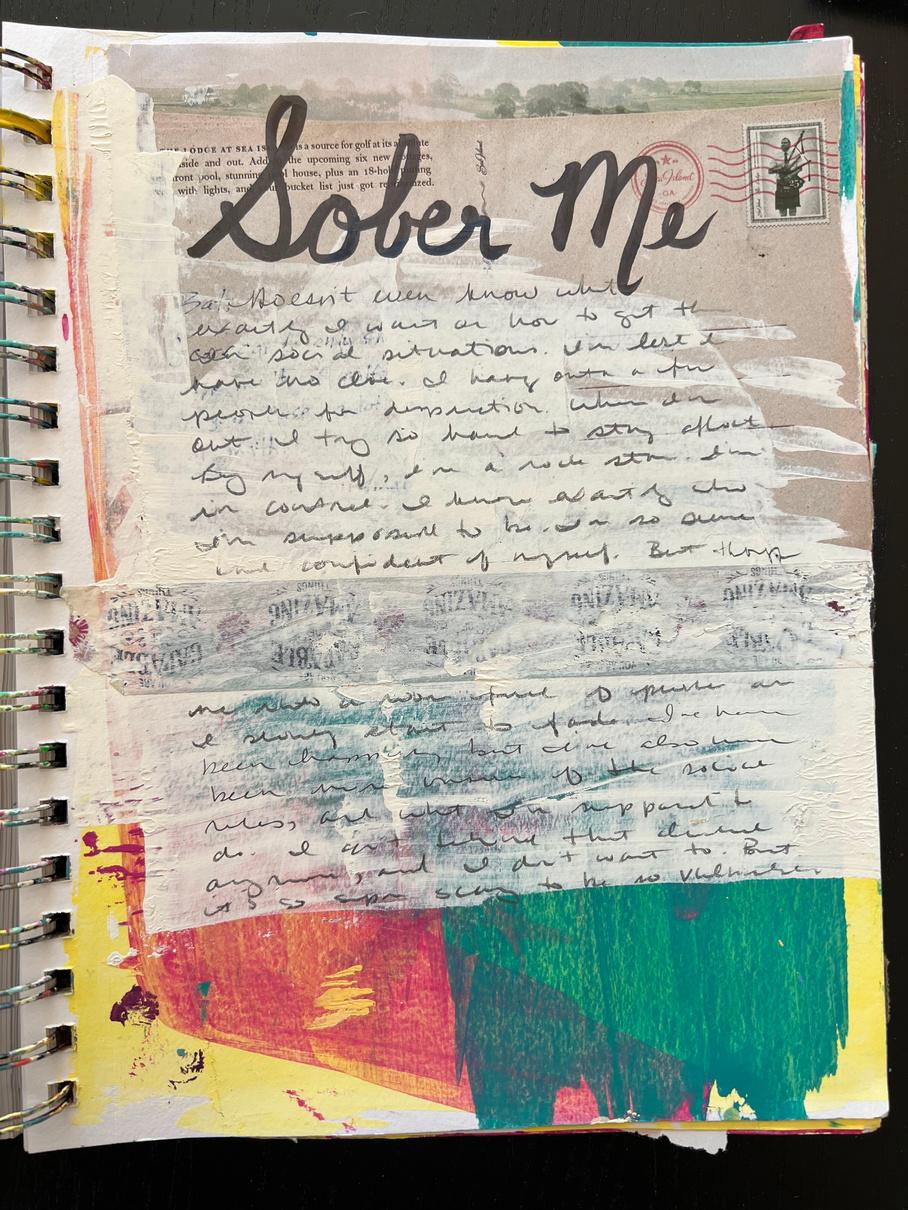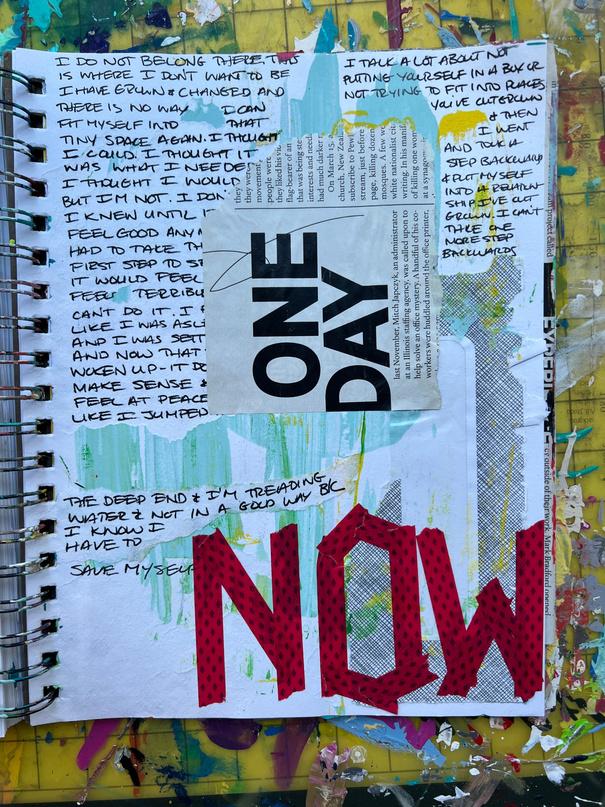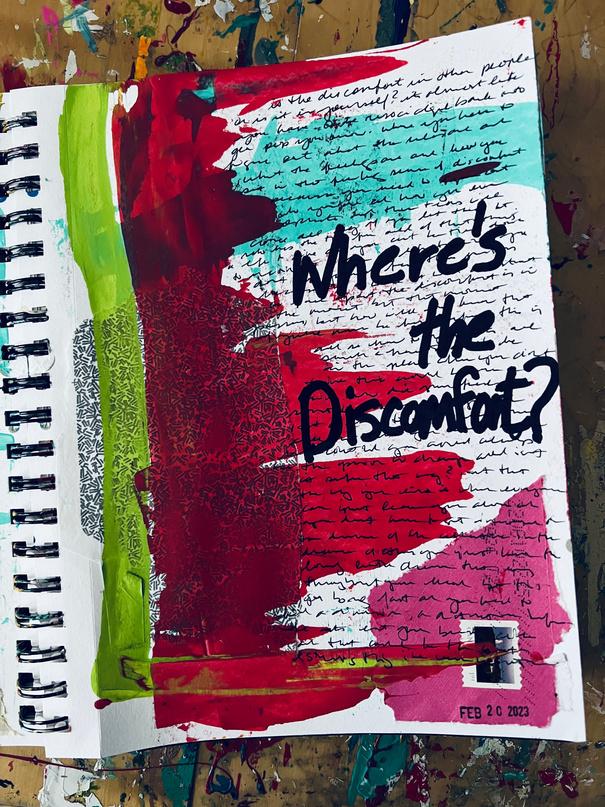
3 minute read
WHY A SKETCHBOOK?
By Krysty Krywko, Ed.D.
Krysty is one of our current Deep Dive into Sober Yoga Students - our 100 Hour Yoga Teacher Training program.
Advertisement
Why a sketchbook? I get asked this question all the time.My answer is simple, because I needed to know and love my sober self first, before I could let anyone else in.
I needed a place to figure out who the hell I was now that I had stopped drinking I started drinking when I was 17 I quit when I was 47. That’s 30 years of avoiding myself, of numbing myself, of letting a substance dictate who I was, and how I was going to live my life
I remember hanging on so tightly to my sobriety in those first few months Finding the time to work in my sketchbook, as often as I could, became such an important part of my routine.
My sketchbook started to fill the void that alcohol left in my life. It became the place I would go to every morning to set my intention, to scribble down my emotions, to figure out where I was at that exact moment, to ground myself into the present That playful, joyful side of me, that had become so hazy and gray while I was drinking, started to peek out I started to process some of the emotions I had buried so successfully for decades I started to catch glimmers of the woman I wanted to be
Sketchbooking has been part of my (almost) daily practice for five years now And, while I’m not sure if I’ll ever be able to fully measure the impact it’s had on my sobriety, here are five things I know for sure

There are some things you just can’t tell anyone Friends and family try to be there for you, but there are so many parts of sobriety and recovery that are too vulnerable to share. Your sketchbook becomes a safe space for absolutely anything in your life. Hopes, fears, dreams, nightmares No one ever has to read or see the work that you do in your sketchbook. You can write words that are super scary and hard for you to put down and then you can paint over them. Or you can write down your craziest dreams and then hide them all away behind an added flap. You can do whatever you want with your pages, except you can’t rip out a page If there’s something you don’t like on that page, think of a way to make it better. Add something Paint over it Everything in your sketchbook goes towards the blueprint of the life you ’ re creating, even the mistakes.

2. KEEPING YOUR HANDS
The early days of sobriety are filled with trying to find ways to keep your hands busy, and your mind somewhat still. Especially when cravings hit (like when it’s 5 o ’clock). Keeping a sketchbook becomes a way to not only keep yourself distracted, but it becomes a place where you begin to reimagine your life without alcohol. You start to remember who you were before you started to drink. The things you loved to do The person you wanted to become The more active you are in your sketchbook, the deeper the connections you make as you begin to move towards building radical self-acceptance

The sketchbook meets you where you are. Drinking takes you further and further away from yourself. You lose touch with who you are Your sketchbook becomes a place where you start to build yourself up again Where you get to make choices about what you want to put in your sketchbook, how you want to fill it up. Topics you write about, phrases you ’ ve cut out and glued in, paint colors you ’ ve chosen, shapes you ’ ve sketched These are all little clues about your mind and your life at that exact moment And every small choice present on the page, becomes proof that can make choices and works towards building your confidence to make bigger choices. You do know what you want, you just have to get out of your own way and listen. Flipping through the pages of your sketchbook becomes a fascinating journey of your life
Technology has changed the way we write, design, interact, communicate, and create We need to get messy Life is messy Emotions are messy. Recovery and sobriety are messy It’s hard to process what you ’ re going through while you stay on the sidelines not allowing yourself to get down into the mess It’s difficult to take out your frustration while you type madly on your iPad, or enter your feelings into a journaling app on your phone But, when you grab a marker and make a mess on the page, scribbling out your feelings there is a release that happens When you start layering a page by venting feelings of anger and pain, and then cover those words with a layer of hope, by adding images and paint; you can begin to see a way out of that pain and grief. We tend to do our best thinking when our hands are busy and dirty










